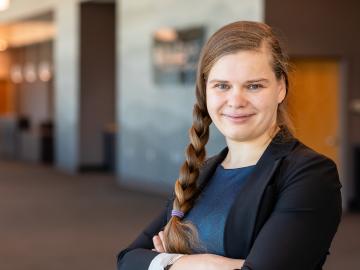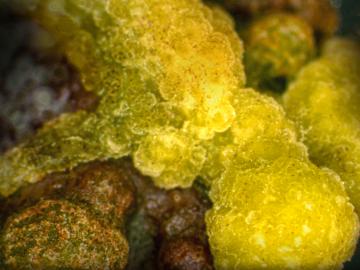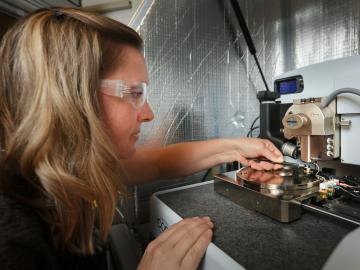Filter News
Area of Research
- (-) Materials (33)
- Advanced Manufacturing (4)
- Biological Systems (1)
- Biology and Environment (3)
- Building Technologies (1)
- Clean Energy (44)
- Climate and Environmental Systems (2)
- Computational Engineering (1)
- Computer Science (7)
- Fusion Energy (4)
- National Security (3)
- Neutron Science (16)
- Nuclear Science and Technology (10)
- Quantum information Science (2)
- Supercomputing (19)
- Transportation Systems (1)
News Type
News Topics
- 3-D Printing/Advanced Manufacturing (3)
- Advanced Reactors (1)
- Artificial Intelligence (1)
- Clean Water (2)
- Computer Science (2)
- Energy Storage (3)
- Environment (4)
- Fusion (2)
- Materials Science (11)
- Microscopy (3)
- Molten Salt (1)
- Nanotechnology (4)
- Neutron Science (3)
- Nuclear Energy (6)
- Physics (2)
- Polymers (2)
- Sustainable Energy (3)
- Transportation (4)
Media Contacts

Friederike Bock, a Eugene P. Wigner Fellow, wants everyone to know scientists aren’t just robots—they want to help others understand their research, and they have wide-ranging interests.

Researchers at Oak Ridge National Laboratory demonstrated that an additively manufactured polymer layer, when applied to carbon fiber reinforced plastic, or CFRP, can serve as an effective protector against aircraft lightning strikes.

Students often participate in internships and receive formal training in their chosen career fields during college, but some pursue professional development opportunities even earlier.

Electrons in atoms are pretty talented. They can form chemical bonds, get kicked out of the atom and even “jump” to different locations based on their energetic states.

Researchers at ORNL and the National Renewable Energy Laboratory took inspiration from flying insects to demonstrate a miniaturized gyroscope, a special sensor used in navigation technologies.

Researchers at Oak Ridge National Laboratory will present eight innovative technologies currently available for commercialization during a public event at ORNL on October 17.

A modern, healthy transportation system is vital to the nation’s economic security and the American standard of living. The U.S. Department of Energy’s Oak Ridge National Laboratory (ORNL) is engaged in a broad portfolio of scientific research for improved mobility

Researchers at Oak Ridge National Laboratory proved that a certain class of ionic liquids, when mixed with commercially available oils, can make gears run more efficiently with less noise and better durability.

Six new nuclear reactor technologies are set to deploy for commercial use between 2030 and 2040. Called Generation IV nuclear reactors, they will operate with improved performance at dramatically higher temperatures than today’s reactors.

When Nina Balke came to the United States on a Feodor Lynen Fellowship for German scholars, her original plan was to complete a year abroad and return home to native opportunities in materials sciences.




